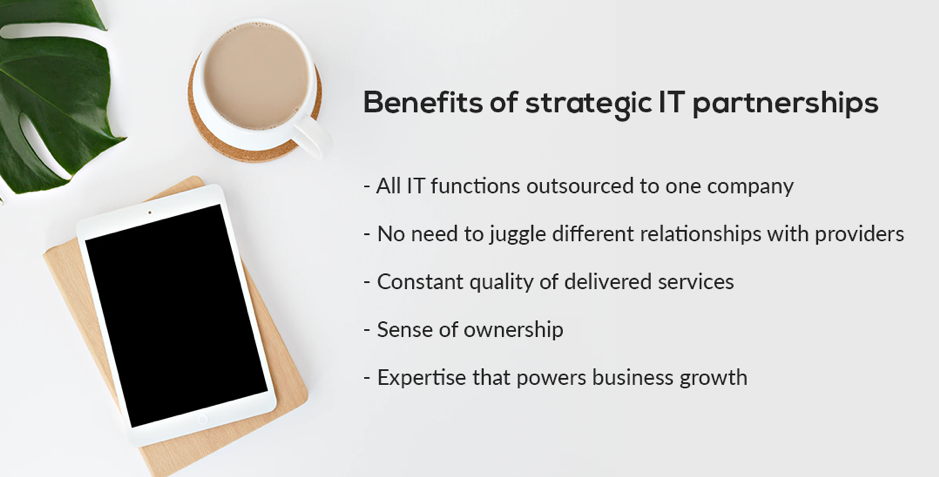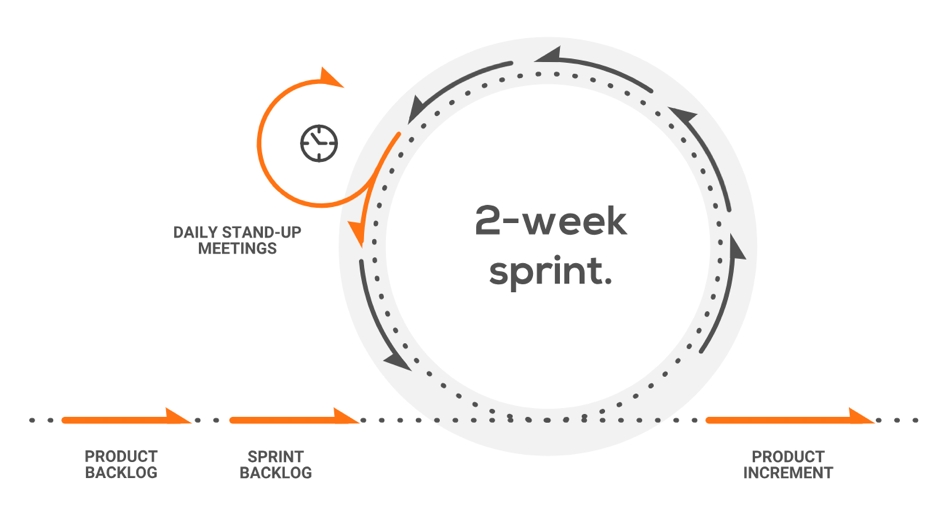

Updated December 16, 2024
This article presents the topic of IT outsourcing from a new angle, focusing on the move away from traditional outsourcing models towards more strategic IT partnerships. It discusses the key benefits of such an approach together with a handful of tips for making such strategic technology alliances work.
Updated September 9, 2022
IT outsourcing was born in the late 1980s when Eastman Kodak made the bold business decision to outsource the design, development, and management of a new data processing center to IBM. Fast forward to the early 2000s, and you'll see countless businesses delegating IT functions to third parties.
Looking for a IT Services agency?
Compare our list of top IT Services companies near you
Traditionally, outsourcing was considered a low-cost alternative to hiring internal staff. Organizations often chose vendors based on their bottom-line cost rather than the value of provided services.
But during the last few years, this has changed dramatically.
More than ten years of business experience has taught me that outsourcing can be more than just delegating problems to an anonymous team on the other side of the globe. When done right, it can become a real strategic partnership where 2 companies enter into a symbiotic relationship where they support each other's growth.
Whether you’re looking to hire an IT partner for the first time or have several years of experience collaborating with service providers, this article will help you understand how to get the most out of your business partnership.
Looking for a new IT team? Check out our list of top IT service providers.
Additional reading, ‘B2B Partnerships: Questions to Ask Potential Business Partners.’

The primary reasons why companies all over the world outsource IT have remained the same since Eastman Kodak's decision in the 1980s.
It’s about cutting costs by reducing the number of internal staff and infrastructure along with the overhead that comes with them. Organizations would choose low-cost providers to fulfill specific technology needs.
But the problem with this low-cost approach is that such providers tend to specialize in specific areas and can't provide anything beyond staff augmentation services. That's because they share the low-cost outsourcing mindset and fail to consider expanding their service offerings.
However, outsourcing is now transforming from low-cost staff augmentation to a valuable strategic alliance.
Outsourcing IT functions is no longer a simple cost reduction measure. Instead, it's an opportunity to partner with a team of experts who bring a unique mix of business and technology expertise on board.
Software development agencies like Sunscrapers can quickly scale services to help companies meet the rapidly changing business demands, giving them an instant operational boost and serious competitive advantage. Outsourcing allows businesses to stay nimble and focus on core competencies.
In the most rewarding scenario, such collaboration becomes a real strategic partnership.
Companies today can find providers who are able to add value to a business that goes way beyond cost-cutting.
When teaming up with a strategic IT partner, companies get the traditional benefits of outsourcing together with the potential to take advantage of their partner's expertise for guidance as the business grows.
IT partners offer multi-faceted services that handle all a wide range of IT needs, starting from software development services (e.g., business, ERP, BI web, mobile applications) to consulting services (e.g., strategic IT planning, on-demand CTO services, ERP implementation).
You can outline the benefits of strategic IT partnerships like so:
By keeping all these functions under the roof of a single technology partner, organizations don't have to juggle different relationships and are guaranteed a constant quality of delivered services.
In such a symbiotic relationship, both the company and its IT partner can focus on what they do best.
So, what can you expect from your IT partner? The ideal strategic IT partnership is well-integrated into your business, which allows for a more nuanced support system. To lead a navigate a successful business partnership, follow these tips.
An experienced provider will compose teams with the deliverable in mind, not the headcount. In a strategic partnership, the partner shares the responsibility of the development process, as well as its outcome and its implications for the company's business objectives.
By outlining an IT strategy, companies can ensure that both sides of the partnership are working towards those goals.
When both sides are committed to the same goals, understand their roles and responsibilities, enjoy the satisfaction from work, and celebrate the project's success together, the partnership will be more fruitful.
Additional reading, ‘How to Create an IT strategy in 7 Steps.’
A low-cost provider might be hesitant to deliver bad news. A real partner always notifies the company as quickly as possible to mitigate the risks and come up with a solution.
If something happens that delays a deliverable or changes a requirement, a tech partner is going to address it right away instead of waiting for a formal review meeting. Open and frequent communication between the 2 companies that are part of a strategic alliance helps to make informed decisions fast.
One way to streamline communication is to use project management or communication tools such as:
These tools will streamline communication and make sure that your entire IT team is on top of their priorities
The agile software development methodology is an excellent method for addressing requirement changes that may happen once the project is under development. Building an iterative development process with frequent reviews and outputs is critical to keeping the project on track.
For example, we combine agile with continuous integration/continuous development (CI/CD) and test automation processes to ensure regular and fast-release cycles.

This is done in 2-week sprints to ensure that everything remains on track at set intervals.
Additional reading, ‘7 Software Development Models to Organize Your Team.’
In my experience, long-term partnerships usually grow out of small projects that demonstrate the quality and performance of outsourcing partners. A successful project may lead to ongoing development projects and support in other areas as the company grows. That's how we launched our longest collaborations.
Companies need a predictable quality software development – and that's something only a strategic IT partnership can deliver.
Hiring IT experts and building in-house teams is a huge burden that leads companies to outsource software development to cut costs and speed up their time to market. But by doing so, these companies experience serious business risks that focus on the quality and timeliness of delivery.
As the CEO of a software development company that provides skills and expertise to clients all around the world, I believe that a strategic IT partnership model is what IT outsourcing will look like in the near future.
It’s simple: businesses looking to avoid the common pitfalls and compromises of traditional outsourcing should consider teaming up with an IT partner. Only a close tech partnership can help companies meet the demands of today's fast-paced, increasingly competitive market.


